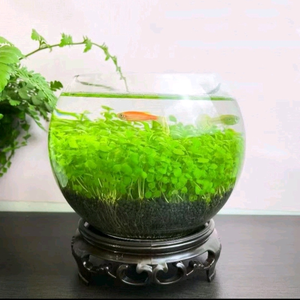Search
1/6
RM2.20
F28 Biji Benih bunga Biru/Blue Iris Lactea flower seeds
Sold by ABC Fishes
4.5(2)
7 sold
Select options
Select
Shipping
From RM4.90
Est. delivery by May 7 - May 9
Specifications
Customer reviews (2)
y**e
Item: 25pcs
Terbaik

4d ago

b**
Item: 25pcs
good
December 19, 2024

ABC Fishes
146 items
Shop performance
Better than 86% of other shops
Ships within 2 days
96%
Responds within 24 hours
100%
About this product
Jenis Pembungkusankantung Isian Semula
Product description
Blue Iris Lactea flower seeds
15 seeds
25 seeds
Growing Blue Iris Lactea (Iris lactea) from seeds requires some specific steps to ensure successful germination and healthy growth. Here is a step-by-step guide to help you grow Blue Iris Lactea flowers from seeds:
Materials Needed
Blue Iris Lactea seeds
Seed trays or pots
Seed starting mix or a well-draining potting soil
Plastic wrap or a plastic cover
Water
Steps to Grow Blue Iris Lactea from Seeds
1. Seed Collection and Preparation
Seed Collection: If you have access to mature Iris lactea plants, collect the seeds in late summer or early autumn when the seed pods turn brown and start to split open. If not, purchase seeds from a reputable supplier.
Stratification: Iris lactea seeds benefit from a cold stratification period to break dormancy. Place the seeds in a damp paper towel, seal them in a plastic bag, and store them in the refrigerator for 4-6 weeks.
2. Sowing the Seeds
Seed Trays/Pots: Fill seed trays or small pots with seed starting mix or a well-draining potting soil. Moisten the soil before sowing the seeds.
Sowing: Sow the seeds on the surface of the soil and lightly press them down. Cover the seeds with a thin layer of soil (about 1/8 inch or 3 mm).
Labeling: If you are planting different types of seeds, label each tray or pot accordingly.
3. Germination
Covering: Cover the trays or pots with plastic wrap or a plastic cover to retain moisture.
Light: Place the trays or pots in a location with indirect light or under grow lights.
Temperature: Maintain a temperature of around 60-70°F (15-21°C) for optimal germination.
Watering: Keep the soil consistently moist but not waterlogged. Water gently to avoid disturbing the seeds.
4. Transplanting Seedlings
Germination Time: Iris lactea seeds can take several weeks to a few months to germinate. Be patient and continue to keep the soil moist.
Thinning: Once the seedlings have a few true leaves, thin them out if they are crowded, leaving the strongest plants.
Transplanting: When the seedlings are large enough to handle and the risk of frost has passed, transplant them into the garden or larger pots. Space the plants about 12-18 inches (30-45 cm) apart in well-draining soil with full sun to partial shade.
5. Care and Maintenance
Watering: Water regularly, especially during dry periods, but avoid waterlogging.
Mulching: Apply a layer of mulch around the plants to help retain moisture and control weeds.
Fertilizing: Fertilize with a balanced, slow-release fertilizer in spring as new growth begins.
Explore more from ABC Fishes










No more products
Open TikTok















![[FAST SELLING] +-0.5g Benih DAUN SUP celery seeds (REPACKED) . boleh semai dalam pasu. guna untuk masak sup](https://p16-oec-sg.ibyteimg.com/tos-alisg-i-aphluv4xwc-sg/542a74b9143a4cbfaef15270876a3ad1~tplv-aphluv4xwc-crop-webp:941:940.webp?dr=15592&from=2378011839&idc=my2&ps=933b5bde&shcp=e1be8f53&shp=8dbd94bf&t=555f072d)















